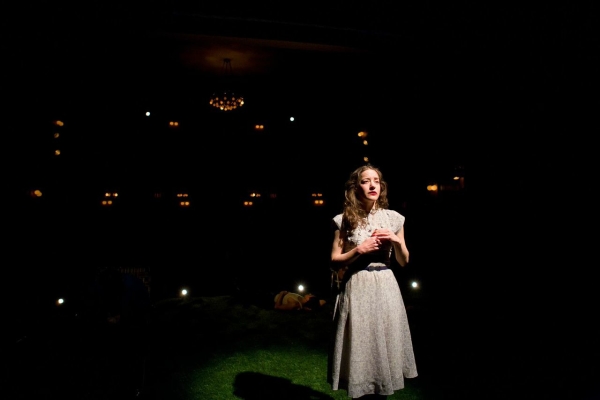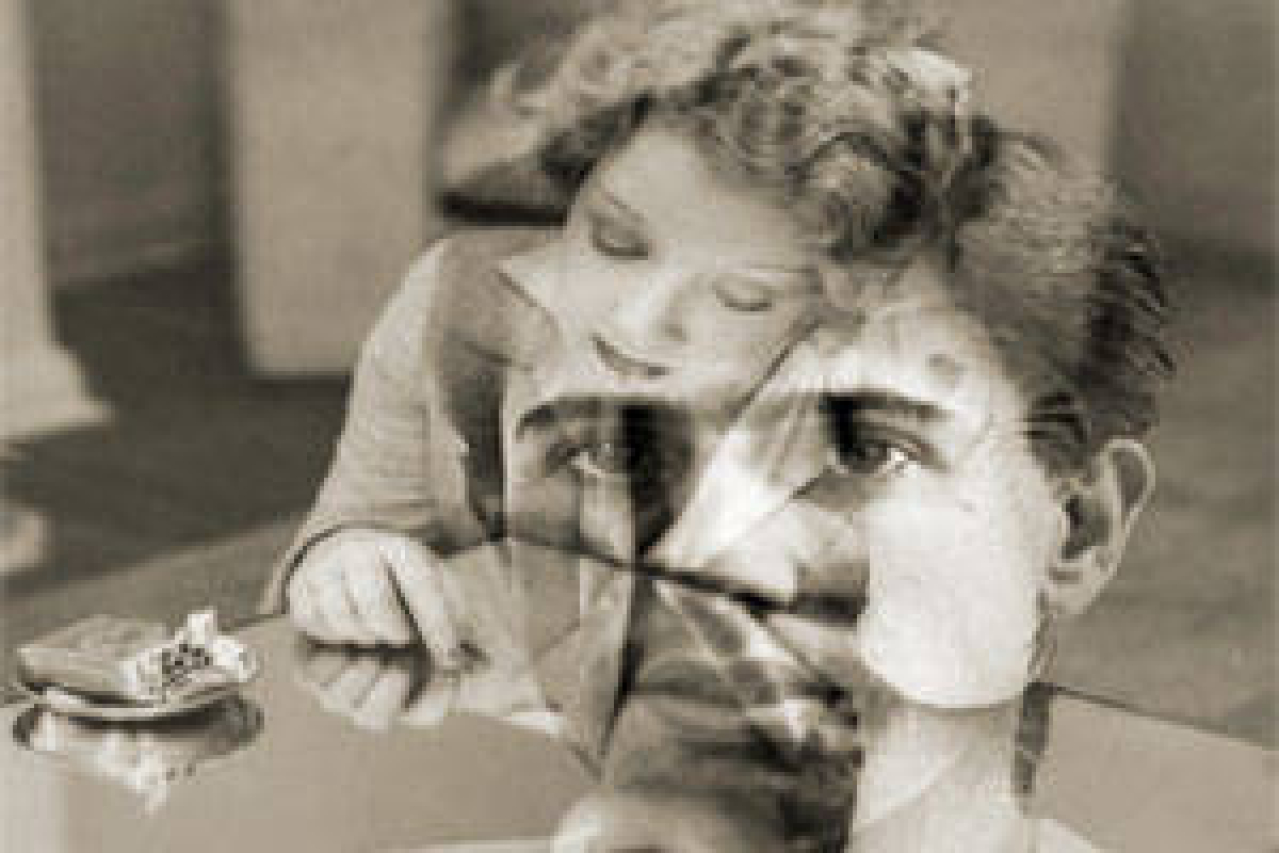I'm Looking for Helen Twelvetrees

(© Hunter Canning)
In the early days of cinema, Helen Twelvetrees was one Hollywood's biggest stars. From 1929-1939, she appeared in nearly three dozen pictures, replacing the veterans of silent films who wouldn't make the jump to talkies. But Twelvetrees, who died of a sedative overdose in 1958 at the age of 49, is one of those actors whose names have fallen through the cracks of history. Even if cultural memory weren't all but extinct today, Twelvetrees' name would still be a bit of a puzzler.
Which is perhaps the reason why playwright/performer David Greenspan has chosen to memorialize her in his newest work, I'm Looking for Helen Twelvetrees, directed by Leigh Silverman at Abrons Arts Center. A fragmented, elegiacal look at her life, it's part biography and part tribute show, with not one, but four different plot strands and timelines weaving in and out of one another. Hard to follow? At times. But undeniably poignant.
The first narrative finds Mike (Greenspan), a 16-year-old youth embarking on a bus trip across the country to see Twelvetrees (Brooke Bloom) perform the role of Blanche Du Bois in a 1951 summer stock production of A Streetcar Named Desire in Sea Cliff, Long Island. Interspersed with that, we learn about Twelvetrees' life, from her youth as Helen Juergens in Brooklyn to her almost fame and unhappy later period, along with three marriages. A third story explores the life and death of Clark Twelvetrees (Keith Nobbs), Helen's husband, who not only survived a jump out of a sixth-story window, but died in a street fight when a passerby defended his female companion against his abuse. Finally, there's a playwright, THE playwright (Greenspan again), who constructs Mike's story before our eyes.
In typical fashion, the author also takes on several other characters, male and female. Watching the deftness with which he transforms himself through vocal ticks, posture, and movement is astonishing, even if crucial dialogue is lost due to his talking in double time. Bloom and Nobbs are very much his equals, delivering precisely realized and highly emotional performances. Nobbs is volatile and intense as he skulks around in a wife-beater and khakis (Theresa Squire provides the conventional 1950s-chic costumes). As the actress herself in various stages of her life, Bloom is magnetic and glorious — wistful as a youth and defeated as the older woman who eventually succumbs to addiction.
While following four stories at once can be a challenge, Silverman's ingenious production adds a level of immediacy that makes the show thoroughly captivating. Placing the audience on stage alongside the actors, Silverman, scenic designer Antje Ellermann, and lighting designer Jennifer Schriever use the two-level auditorium as a symbolic backdrop of the world Twelvetrees longs to be in but can never quite reclaim. As the lights rise and fall on the empty house, the actors peering out at it longingly, it's hard not to be devastated at the thought of someone watching her life disappear before her very eyes, and how our own memories, the ones that are supposed to keep people alive, failed her, too.











